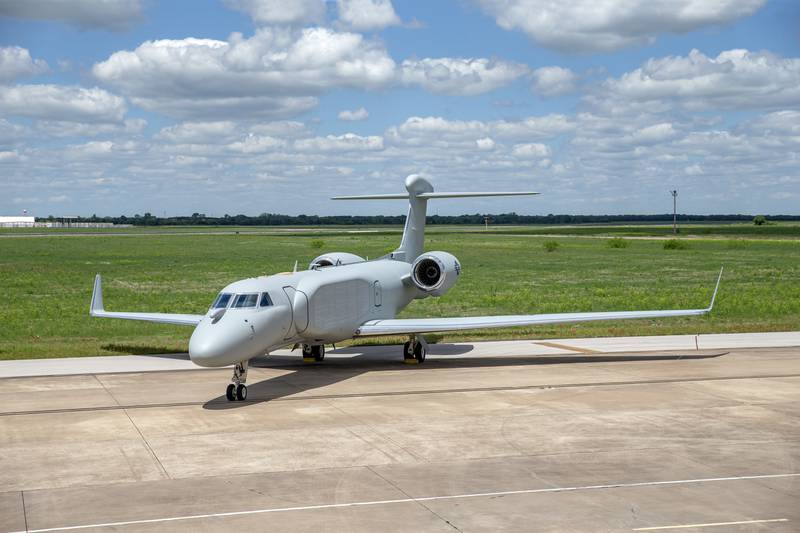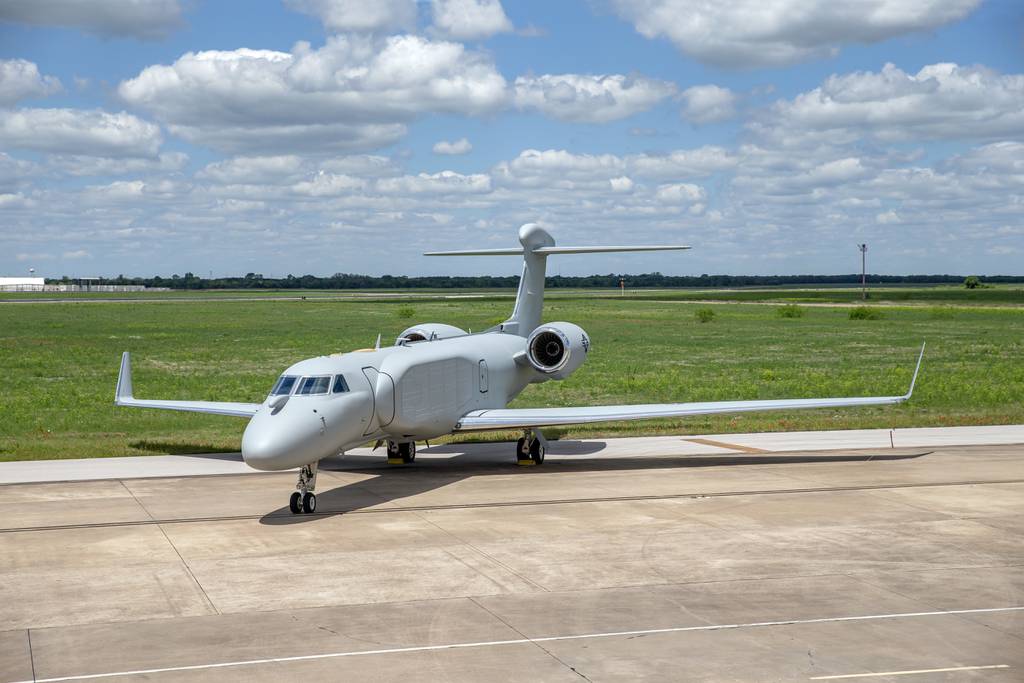The Air Force plans to add five EA-37B Compass Call electronic-attack aircraft to its arsenal in the coming fiscal year, as it swaps out the aging EC-130H fleet for a smaller, modern set of airborne jammers.
The service noted their arrival in budget documents released March 11. The first of 10 EA-37Bs was delivered to the Air Force last year for testing — two years later than anticipated — before heading to its eventual home at Davis-Monthan Air Force Base, Arizona. Delivery of the first mission-ready jet is expected sometime in 2024.
RELATED

It’s unclear to what extent the first five aircraft will be used in testing or if they will enter regular operations as they come online. Air Combat Command, which manages the fleet, declined to provide more details about the jets.
Compass Call is designed to jam enemy signals, including communications, radar and navigations systems, and can suppress enemy air defenses by blocking the connection between weapons systems and command-and-control networks. The aircraft also carries hardware and software that give airmen the ability to hack into wireless devices, defuse roadside bombs and more.
Its new airframe — a Gulfstream G550 business jet outfitted with advanced electronic attack equipment by an L3Harris-BAE Systems team — will also be able to soar higher than 40,000 feet and fly at nearly 600 mph, nearly twice as high and as fast as the legacy EC-130H.
The 43rd Electronic Combat Squadron at Davis-Monthan will be the first to transition to the new Compass Call, which began flying in the 1980s. As it prepares to replace old with new, the squadron logged its final flight in an EC-130H on Feb. 15.
“Throughout its storied existence, the squadron’s adaptability and commitment to evolving military technologies shine through, having operated 11 different aircraft types across six continents,” 43rd ECS Commander Lt. Col. Tray Wood said in a statement. “The final EC-130H flight marks the end of an era and signals the beginning of a new chapter with the forthcoming EA-37B transition.”
RELATED
This Compass Call squadron was deployed in Afghanistan for 20 years. Here’s their inside story.
The 41st and 42nd Electronic Combat Squadrons, also based at Davis-Monthan, are still flying the legacy platform. The 41st is the only remaining operational squadron flying the EC-130H; the 42nd is a training squadron.
The new EA-37B, which was redesignated from EC-37B late last year, comes as the Air Force looks to replace many of its decades-old aircraft with more-capable versions that may have a better shot at surviving in future conflicts against advanced adversaries like China.
The service said in November it had retired nine of its 14 old Compass Calls so far. Air Force budget documents show that the service plans to send one more EC-130H to its aircraft “Boneyard” this year. The budget also includes an additional $15 million for operating and maintaining the Compass Call program, driven by fielding the new aircraft and storing the retiring planes.
A mainstay in U.S. Central Command during the war on terror, the EC-130H carries a 13-person crew, including two pilots, a navigator, a flight engineer, a mission crew commander and supervisor, a signals analyst and multiple cryptologic language analysts. The Air Force contends that though its new Compass Call airframe is smaller, advances in equipment will allow it to consolidate jobs onboard and cut the crew to nine members.
The 41st Electronic Combat Squadron spent 20 years overseas with the Compass Call, becoming the longest continuously deployed Air Force unit in Afghanistan at nearly 14,800 sorties over 90,000 flying hours before returning home in 2021.
Courtney Mabeus-Brown is the senior reporter at Air Force Times. She is an award-winning journalist who previously covered the military for Navy Times and The Virginian-Pilot in Norfolk, Va., where she first set foot on an aircraft carrier. Her work has also appeared in The New York Times, The Washington Post, Foreign Policy and more.








